Tumblr. The website has, admittedly, a somewhat notorious reputation as a place where fandoms roam free and teens are constantly on patrol for the next dank meme. It is a platform that strikes fear into the hearts of the cultural sector, but also presents a unique opportunity for museums and galleries to reach a different audience and share content in a more informal and personal way than on Facebook or Twitter.
For those unfamiliar with the website, Tumblr is a microblogging platform split between text posts, images, videos, and sound clips. Users can post original content or reblog from others, with posts appearing in an endless scroll dashboard alongside posts from followed users and tracked subjects. Bloggers can use tags to sort material within their dashboard and blog, with featured blogs and recommended content (moderated by Tumblr staff and subject ‘curators’) shown on the side of dashboards. There are three options for communication within the platform: adding comments via reblogs, an ‘ask’ feature that allows users to send questions to blogs publicly or anonymously, and a newly unveiled messaging program that allows blogs to communicate privately in a similar way to Facebook chat.
The most notable thing about Tumblr is the way the platform is stratified based around interests and themed blogs. There are ‘fandom’ blogs dedicated to various authors, movies/tv shows, bands, and comics; ‘aesthetic’ photo blogs reblogging images that fit their visual scheme; poetry, literature, and art blogs split between creating new content and reblogging that created by others; and general interest blogs (the most popular for casual users) reblogging content from a wide range of sources and topics. It’s not uncommon for users to have a main blog and several ‘sideblogs’ dedicated to their various interests to avoid crossover, each blog having a unique theme and following.
In terms of post content, Tumblr is the best place to share relaxed, informal text and image posts and to interact with other users. Successful posts are short, self-aware, irreverent, and humorous – a combination that can be hard to crack for cultural institutions trying to get a foothold on the platform.
Setting Up the Blog
After the successful revitalization of our Pinterest page in October, we decided to try our hand at Tumblr. In late November, we acquired the victoriaandalbertmuseum.tumblr.com url begin designing our blog. On Tumblr, the ‘dashboard’ section of the platform is standardized, but users are allowed to customize their blogs using html or by choosing a free or ‘premium’ theme from a catalogue of thousands designed to highlight particular content, blog types, and aesthetics.
We went for the highly customizable Method theme by Safe as Milk, allowing an infinite scroll of gapless photos and posts and a streamlined navigation system for which we chose a white, black, and magenta colour scheme. We were able to incorporate the standard V&A logo and font, maintaining brand guidelines and a cohesive online presence while highlighting the visual drive of our blog and creating a easy-to-use but aesthetically pleasing profile.
We went back after a few months and added a more comprehensive organisation system, allowing users to search by category and navigate through our content more easily. This manifested with an ‘explore’ button on our main navigation bar dropping down into a list of subjects available to browse, including ‘museum’ for reblogged photos of the building, ’objects’, ‘photography’, ‘painting’, and ‘sculpture’. The addition of this tagging system and drop-down subject list on the navigation bar means that users can easily find the posts that best interest them, improving their experience on our blog. This system also allows us to easily add new subjects and tags if we discover a demand for it, highlighting the flexibility of the platform and allowing us to evolve with our audience.
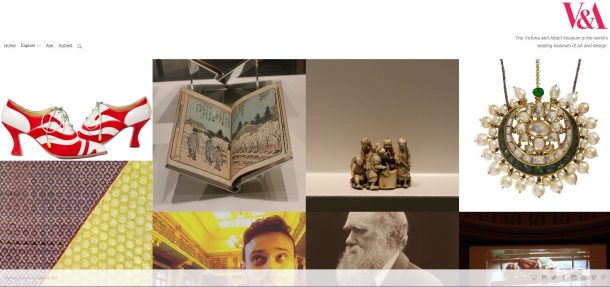
On the 3rd of December, the blog officially went live. Tumblr is a platform that generally focuses on content rather than users, so though we began to accumulate notes on our tagged posts and reblogs, follower growth was slow. This changed in mid-December, when the Tumblr staff chose two of our posts to be featured within the tags– a gilded limewood angel and a Jamie Reid badge. This meant that these particular posts were shown as ‘recommended’ within the art and museum tags, highlighting our content on the dashboards of users across the platform, not just those who followed us.
This caused our follower and note count to explode for a short while, eventually stabilizing to a growth rate of about 6 followers or .8% a day as the posts left the recommended page (recommendations expire after a short time, allowing a steady flow of new and timely content). Unfortunately Tumblr stats only go up to a month, but it is possible to see the fairly steady progression of total follower count after the original follower boom with more varying day-by-day follower growth and note accumulation based on post reception and activity:
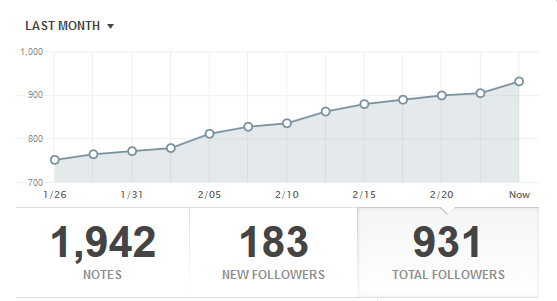
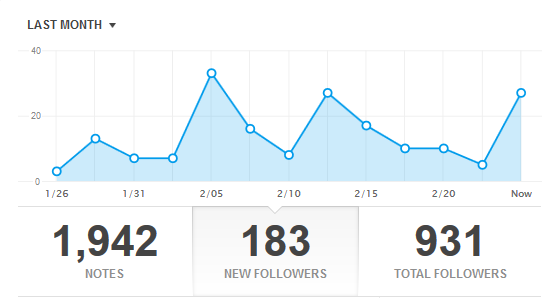
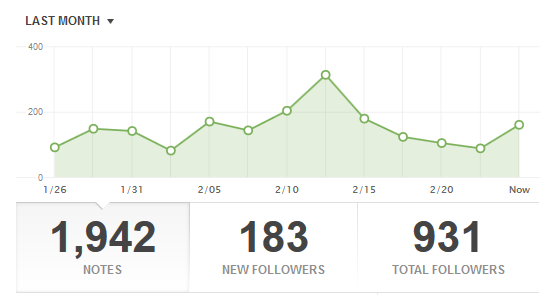
Though we only have about 948 followers right now (though we be but little, we are fierce), our follower count is constantly growing (in the past month alone we increased our follower count by about 25%) and our engagement levels on the platform appear to be slightly higher than on our other platforms. On Facebook, only about .03% of our audience engages with each post. On Tumblr, however, this number is closer to 3%, with our most popular posts approaching 15-16% (although this is obscured by notes created by users who don’t follow us, but have reblogged or liked our posts).
A Crash Course in Tumblr Humour
The desire to create an engaging dialogue with our audience based on reblogs and conversations within the tags requires a revaluation of our tone specific to this platform. In this particular case, the platform we’re trying to establish a presence on is infamous for cultivating a black, eccentric humour marked by self-deprecation and use of extreme irony unusually specific to the community. This very niche Tumblr humour is something that some brands do very well (look no further than American diner and Tumblr favorite Denny’s), and is characterised by joke trends (and specifically meme trends) that rise and fall very quickly. This type of comedy is impossible to explain without examples, so enjoy two of my personal favourites:
As this odd sort of comedy is difficult to understand and even more difficult to replicate, we decided that trial-and-error would be the quickest and best method for us to find our groove within Tumblr, and that meant giving the site-specific humour a go. Put on your seatbelts boys and girls, because this is going to get weird.
One of the more recent Tumblr trends was a “tag yourself” meme that emerged around the 25th-27th of January, and which we took part in on the 28th. Typical posts within this meme trend are comprised of a set of 4-6 photos identified with humorous names and characteristics in Comic-Sans assembled in Paint. When posted, the caption is generally “tag yourself I’m x,” and users reblog the posts with the avatar they identify with in the tags. Though it looks strange and more than a little ridiculous, the posts were surprisingly funny and regularly garnered 50k+ notes.
We decided this meme would be ideal to experiment with as it combines a personal engagement with followers (asking them to tag themselves) with the chance to show off a number of items from the collection, providing a perfect opportunity for our foray into Tumblr humour. To make the meme relevant to the Museum, we found 6 of our most unique-looking dolls in Search the Collections, then gave them names and characteristics that we believed would resonate with the Tumblr community and connect with comedic trends on the platform, like “Sandra: smug, wine mum probably, fights dirty” (relating to both the ‘wine mom’ and ‘fighting’ post trends) and “Tim: sad acorn, tried to take a selfie once, just has a lot going on okay” (relating to proliferation of ‘selfie’ jokes on the website as well as the many humorous takes on stress and anxiety). In addition, each photo and object in the post has been sourced back to Search the Collections within the post, driving traffic back to the website and encouraging people to explore the online collections.
-
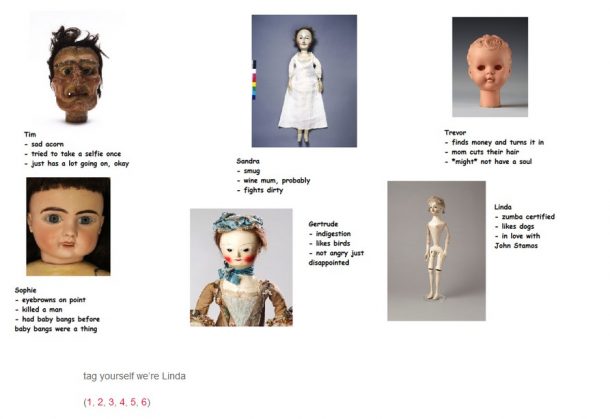
Remember when I said it was going to get weird? It’s gotten weird. - Remember when I said it was going to get weird? It’s gotten weird.
In the first 20 minutes of the post going live, we had a number of notes and enthusiastic responses from followers, including:
- Props to the V&A OMG
- OMG V&A
- WELL DONE
- V and a STAHP (contrary to what it seems, this is actually an expression of excitement)
- My world just turned upside down
- OMG I CAN’T BELIEVE THE V&A IS INTO THIS?!*
*Because adding your own captions when reblogging someone else’s content is more often than not considered bad form (unless it’s a friend, a direct conversation, or a particularly adroit comment), these responses have been pulled from the tags of the posts.
This suggests that our audience is surprised, as they’re used to a more detached tone from us, but approving – followers have reblogged it and tagged themselves (most choosing Tim, Sophie, and Linda), fulfilling the set purpose of the meme and spreading our post and blog to wider and wider audiences. This post was engaged with by about 3% of our audience and had a more vocal response than many of our other object posts and photo reblogs, generating the positive interactivity that we wanted from the platform and comparatively outperforming many of our Facebook and Twitter posts. Though in the long run we might find the comedic approach difficult to sustain and perhaps not ideal for every post, it’s interesting to explore different aspects of the Museum’s persona and play around with our tone and approach, especially in relation to timely posts and wider trends in comedy and consumption.
The Cultural Community on Tumblr
Long before we joined Tumblr, there was a thriving community of museums, cultural institutions, and libraries using the platform and connecting to each other in new and productive ways. Since joining up, we’ve made an effort to reach out and integrate ourselves into this network of cultural institutions, including the Massachusetts Museum of Contemporary Art, the Los Angeles County Museum of Art, and especially the J. P. Getty Museum (with whom we have a close reblogging/reposting relationship on both Tumblr and Pinterest). We’ve also engaged practically with a number of British libraries, universities, and collections on Tumblr in a more playful and informal way , like this exchange with the University of Reading Museums and Collections that resulted in dozens of new followers and notes:
We’ve also used interactions with other museums and their object posts to highlight our own and vice versa, like this example from the City of London Libraries:
These timely, interactive posts, combining relevant objects from our collection and an informal tone mark a departure from the detached event and exhibition promotional content found on our other feeds, focused more on broadcasting than engagement. Though it represents a new image and voice for the Museum, our posts have proven popular with our Tumblr followers and have so far been met with nothing but positive responses, outperforming our other networks in terms of engagement with the added bonus of connecting us directly to a national and international community of cultural institutions with many possibilities for collaboration in the future.
Long story short: Tumblr is a unique platform that requires a different approach than Facebook or Twitter, but if you’re willing to put in a bit of thought and time and establish a dialogue with your followers and other institutions, the payoff can be enormous – connecting you to new audiences, diversifying your online presence, and solidifying the public view of your institution as modern, dynamic, and approachable to people of all ages and interests.
Update 02/03/16:
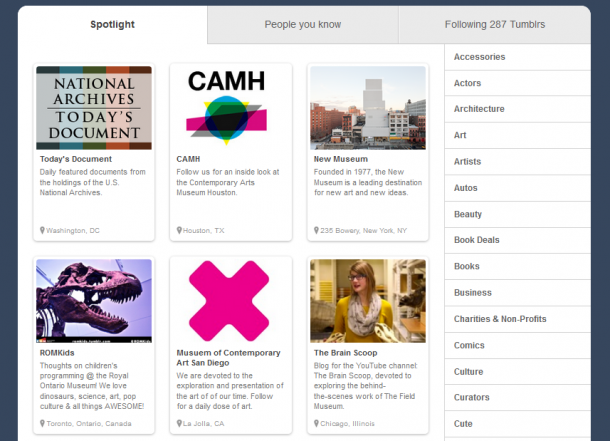
As of February 27th, our Tumblr was added to the platform’s ‘Spotlight’ page. In the words of the Tumblr staff, Spotlight is “a special place to highlight a few of these blogs that truly inspire us,” and acts as a directory of the best blogs and content creators on the website. Spotlighted blogs are sorted into categories, and appear in a grid of other recommended blogs with an image and short description. We’ve been added to the ‘Museums’ category, which includes a total of 40 world-class museums like The Getty, New Museum, and the MoMA. As a result of our featured position, over the past four days our follower count has increased 49% to 1,576. Hopefully being spotlighted will help us steadily accumulate followers and reblogs, helping to grow the Museum’s presence on the platform, expanding our audience and driving more traffic back to the website.
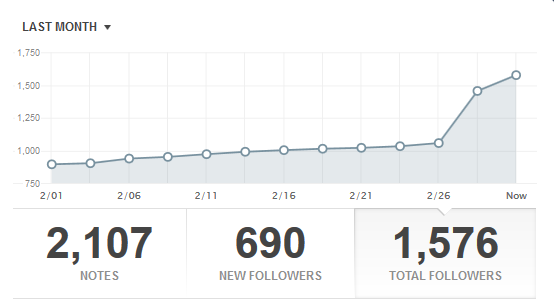
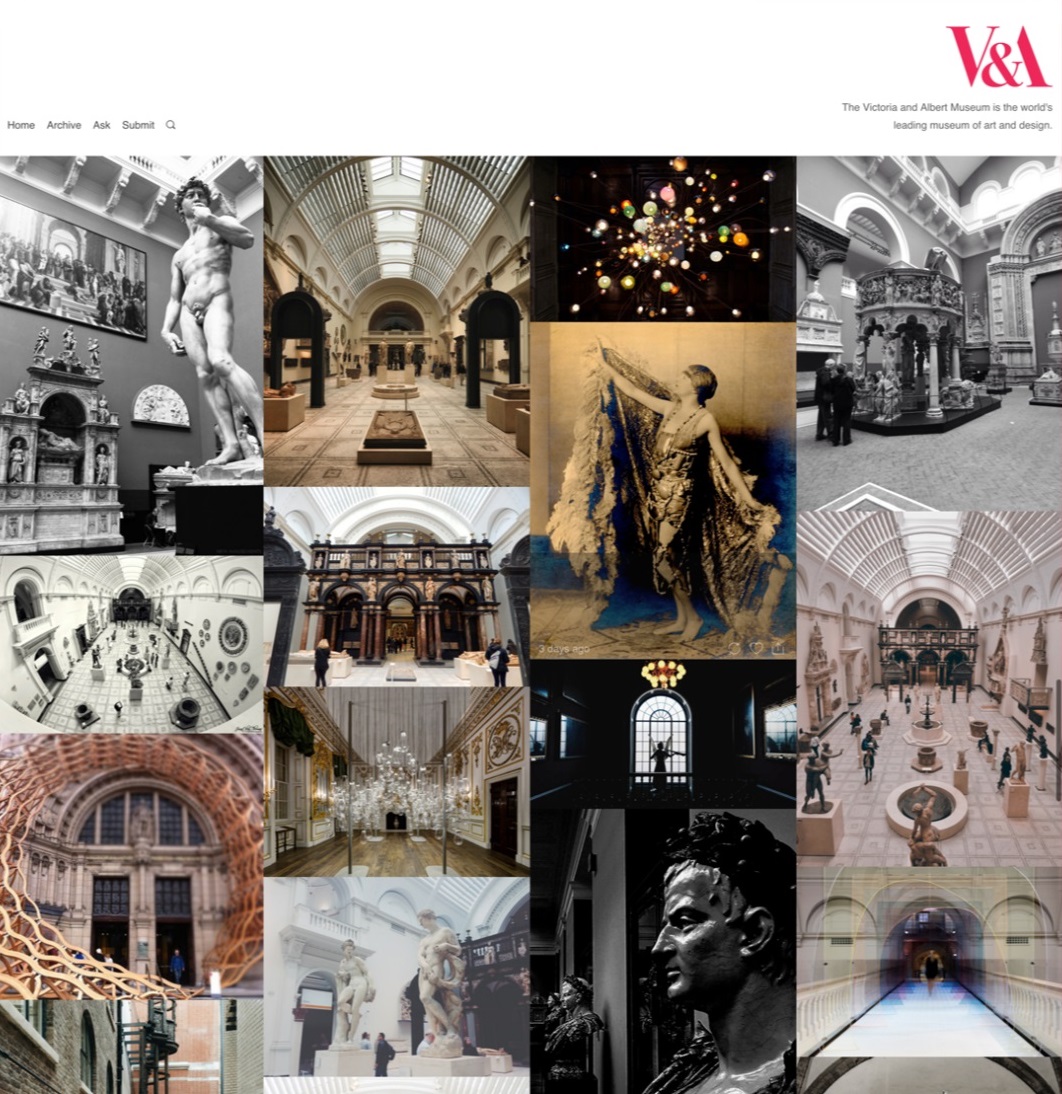
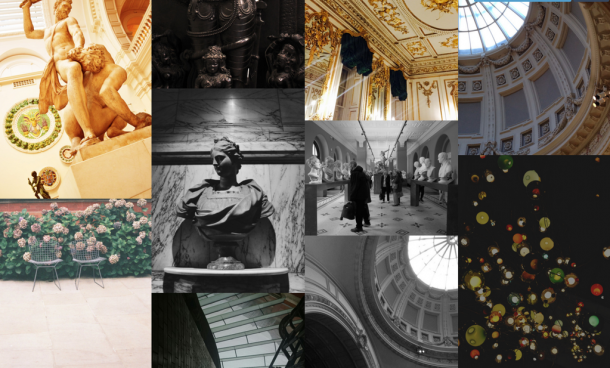
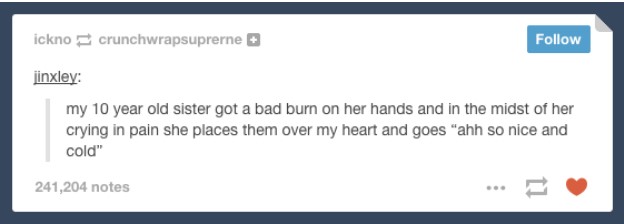
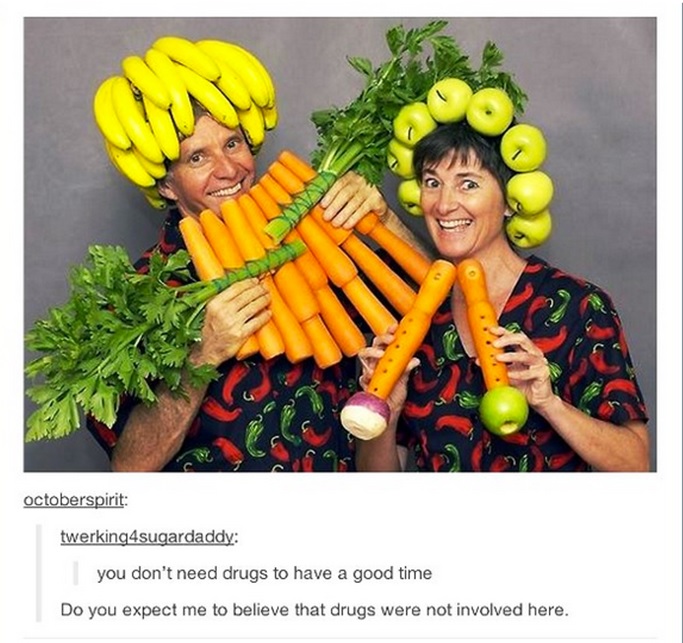
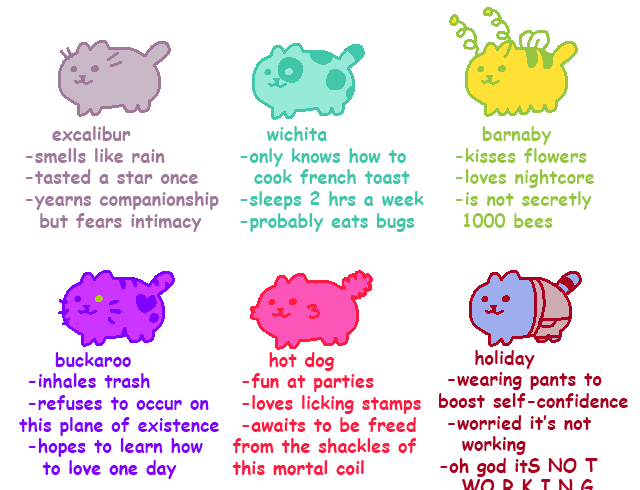
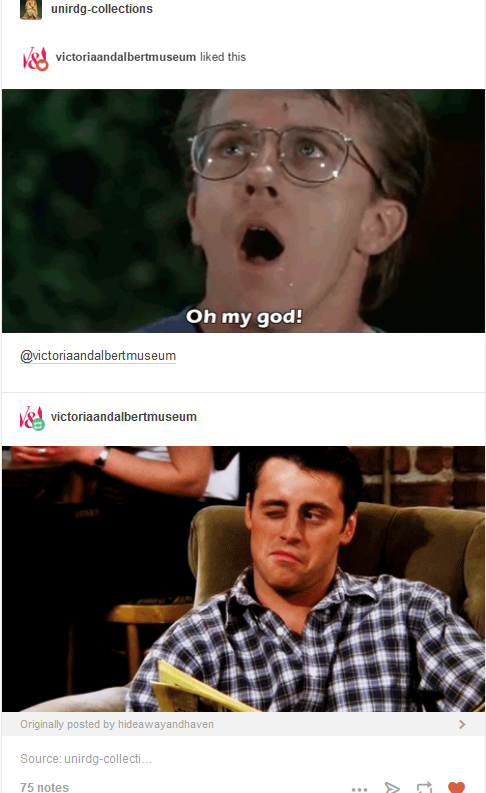
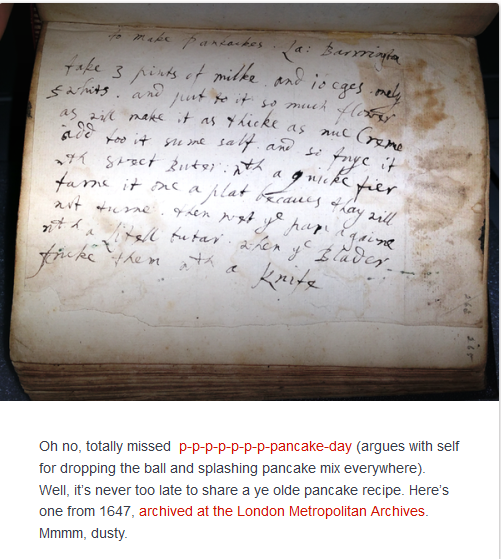
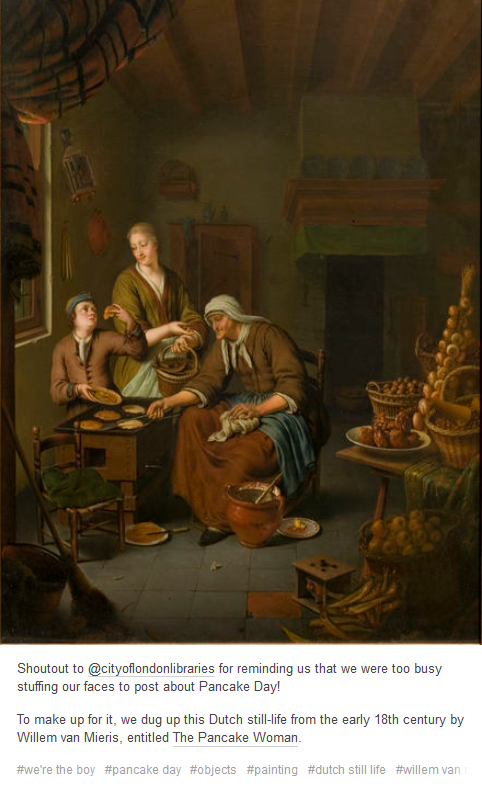
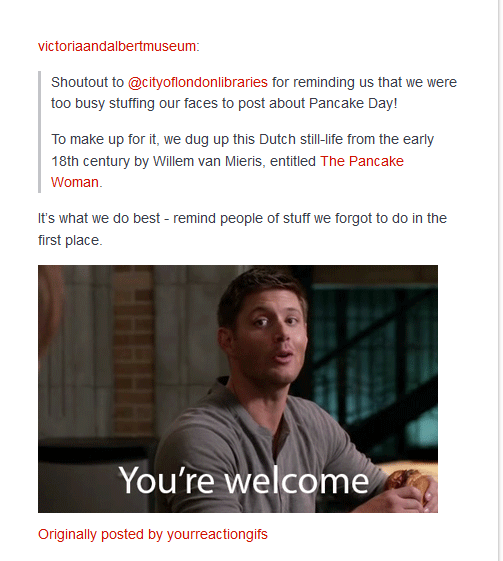



Its a great article!
I’m glad you made a Tumblr page, this way I’m able to see what’s new on your website and follow you on one more medium.
It´s a great article, this way I’m able to see what’s new on your website and follow you on one more medium
Dean from Safe As Milk here. We designed and built ‘Method’, the Tumblr theme you are using. It was one of our happiest days as developers when we found out you were using Method. We’ve visited the V&A many times and are very fond of it. But to have ‘the world’s leading museum of art and design.’ giving the nod to something we have designed is pretty special. Feel free to contact me directly if you need any help. Thanks for the link in the story too.
It´s great article. I’m glad you made a Tumblr page.
Nice Sharing! Thanks for this helpful information I agree with all points you have given to us. I will follow all of them.- media sales jobs